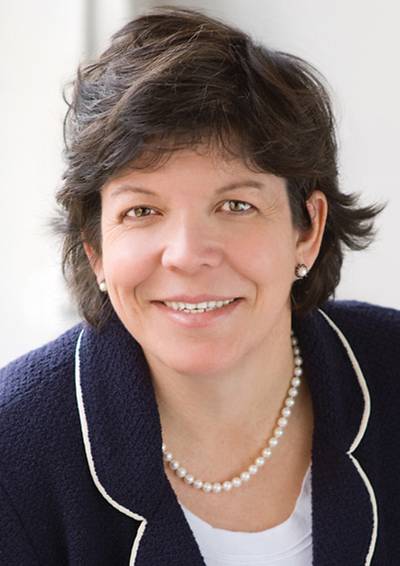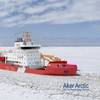Subchapter M & the Towing Vessel Bridging Program: What’s Next?
This time last year, the U.S. Coast Guard was busy taking comments on the proposed rulemaking for Subchapter M. A very vocal discussion ensued, with the predominant comments focused on impending requirements for rebuilding vessel electrical systems, the standard six on six off “boxed” watch schedules and whether elements of the Crew Endurance Management Systems (CEMS) should be included in the rulemaking.
As of today, the industry has yet to hear of any definitive outcome of Subchapter M discussions, or plans for a final rulemaking. I had the opportunity to attend portions of the American Waterway Operators (AWO) annual convention this year and, of course, Subchapter M was a hot topic. The consensus is the next version will not be released until sometime after October 2013. As to whether it will be in a final rulemaking or a request for more comments, that’s anyone’s guess.
The U.S. Coast Guard Speaks
The Commander of the 13th USCG District, Rear Admiral Keith Taylor, addressed the conference and spoke at length about the Coast Guard’s Towing Vessel Bridging Program. The Bridging Program originally started with Phase I Exams — “you call us, we’ll come out and inspect.” Passing the voluntary exam meant the vessel would receive a UTV (uninspected towing vessel) decal; good for three years. As of June 2012, Phase II of the operation started — “we’ll call you.” Phase II Exams focus on law enforcement and on vessels that have not been examined before. Exams also may be initiated due to the noted poor condition of the vessel. The Coast Guard will begin conducting more Phase II Exams as of January 1, 2013. Phase III Exams will entail implementation of Subchapter M once the final rule is published.
Some companies are facing the expiration of their original Phase I decal. These companies will need to call the Coast Guard to schedule another exam. While some companies have received letters that 100% of their fleet has been examined and all vessels have received decals, Admiral Taylor stressed that it will important to check the Coast Guard’s database of exams. There have been many clerical errors discovered in recording the exams and issuing decals. Even if you received a letter indicating 100% compliance of your fleet, this does not necessarily indicate that the information in the Coast Guard’s database matches this level of compliance.
Competent Inspectors / Fair Inspections
Clerical issues aside, the Coast Guard learned a lot from the Phase I Exams process. The goal is for the exams to be “professional, fair and consistent,” Taylor said. The Coast Guard is working to develop proficiency and competency among their Marine Inspectors so they are not trapped by the “paradigm of the last 20, 30, 40 years of the person coming aboard in the blue coveralls with a hammer.”
Addressing this stale paradigm is important, as the traditional inspections were designed to find fault, specifically looking for deficiencies. As Safety Management Systems (SMS) are developed, these Marine Inspectors must look at the system as a whole and gauge whether it addresses the requirements. Marine Inspectors should be asking themselves: “Is there ample evidence of compliance with the system?”
AWO, RCP, SMS, TVIB – and you …
A Safety Management System is a prerequisite for membership in the AWO and the organization’s Responsible Carrier Program (RCP) spells out what a company must include in that system. The RCP requires internal audits to be completed as well as and third party audits performed by qualified RCP auditors at predetermined intervals. Previously, the AWO provided the training for qualified candidates to become certified as RCP auditors (of which this author is one) as well as mandatory continuing education every three years. Third party audits utilize (among other things) detailed checklists, which can be found on the AWO’s website, for both the vessel audit and the audit of the company’s office(s).
What will become of the RCP is uncertain, but the AWO will phase out any direct role in auditing. It is anticipated that the AWO will “get out in front ensuring that only qualified auditors are approved to conduct RCP/Subchapter M audits.” Whether these third party audits will be structured in the same manner and use similar checklists to the RCP is also unknown.
The Towing Vessel Inspection Bureau (TVIB) is one organization that has been created to try and get in front of the requirements for subchapter M audits. The primary purpose of the TVIB organization is to provide accreditation for third-party auditors and surveyors who work for USCG accepted organizations and conduct third-party audits and/or surveys of towing vessels in accordance with Subchapter M. The TVIB will train and accredit auditors of vessels towing along side or pushing ahead on inland waters (East, West and Gulf Coasts), as well as the Western Rivers.
The TVIB will provide and maintain an audit tool (checklist) for use by all auditors assessing compliance with Subchapter M and train auditors on how to use the tool. However, the TVIB will not conduct audits under Subchapter M itself nor will it provide day-to-day oversight of the auditors or surveyors.
While I am not aware of any other organizations attempting to discern what the qualifications for auditors will be once Subchapter M comes to fruition, it is evident that given the number of uninspected vessels out there, we will need a significant number of auditors. A structured system is paramount to ensuring proficiency and competency among auditors and to make certain audits are conducted in a professional, fair and consistent manner.
Sub M Waiting Game
It has already been a long wait for the Subchapter M final rulemaking and patience is wearing thin for many in this industry. Hopefully the final product will be worth the wait and will allow enough time to develop competent auditors and a fair and consistent auditing system.
(As published in the November 2012 edition of Marine News - www.marinelink.com)











